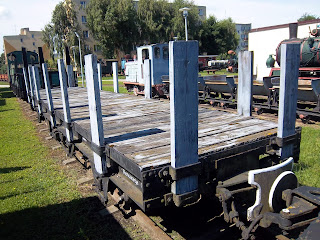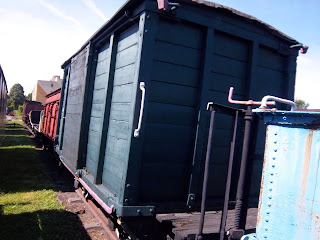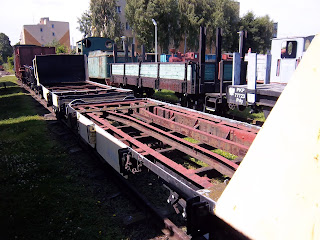The heat wave that has been scorching Italy for a month now has been hitting the news, at least in a small way. As Wodehouse put it for a different city, "July came and went, making New York an oven. August followed, and one wondered why one had complained of July's tepid advances."
How does one handle 100+ degree temperatures in a location largely without air conditioning?
First of all, many houses' walls are thick, heavy stone. It has taken until this week for our interior walls to heat up...but heat up, they have. I measured the wall temperature and got a measurement of 88 degrees, so the formerly cool walls no longer offer a benefit.
Windows are opened in the early evening and stay open all night long, with fans blowing as much of the slightly cooler air into the house as possible, making sleeping possible. In the morning, windows and heavy shutters are closed to prevent sun infiltration (plus, keeping the rooms slightly darker gives a psychological effect of lower temperature) and to keep the cooler air indoors.
The pausa. This is the time between 1 p.m. and 4 p.m. that no one visits anyone at home, because everyone in the family is sleeping or lounging in minimal clothing, directly next to a fan (which, by the way, when it's really hot feels like a hair dryer). There is very little outdoor foot traffic until 5 or 6 p.m.
Changing schedule. Because you sleep during the extreme heat, you don't need quite as much sleep overnight. A bedtime of midnight and a rise time of 6 a.m. is not unusual, and works pretty well; this allows you to go out during the cooler part of the morning to enjoy coffee and breakfast, and then hang out at night with friends or for dinner.
Lots of water. The air is drier, so evaporative cooling (sweat) helps, but that means you have to drink constantly.
Immersion. Todi has a gorgeous pool which is helpful, and cool baths (sparingly, since we're in a drought) are also a treat. You can reach the coast within about 2 hours' drive as well, so beach time is also a possibility.
Knowing the cool spots of the city. Make friends with people who have a more protected palazzo, because they take a little longer to heat up! The cisterns are also generally cool, but there's not a lot to do down there. Pianegiani has (light, just the right amount) air conditioning, so if you score one of their tables, you're golden!
Most extreme solution? Take advantage of cheap flights and travel. Jeremy, Florence, and I went to Poland in July to get a break, and we are pretty excited about looking at the cool weather in England and Scotland, since we'll be going at the end of the month.
On the plus side, remember those thick walls? Lower energy bills both summer and winter: heated walls means that we won't be running our radiators until December. And, yes, December is sounding absolutely delightful to all of us right around now.
Love,
Alexandra
How does one handle 100+ degree temperatures in a location largely without air conditioning?
First of all, many houses' walls are thick, heavy stone. It has taken until this week for our interior walls to heat up...but heat up, they have. I measured the wall temperature and got a measurement of 88 degrees, so the formerly cool walls no longer offer a benefit.
Windows are opened in the early evening and stay open all night long, with fans blowing as much of the slightly cooler air into the house as possible, making sleeping possible. In the morning, windows and heavy shutters are closed to prevent sun infiltration (plus, keeping the rooms slightly darker gives a psychological effect of lower temperature) and to keep the cooler air indoors.
The pausa. This is the time between 1 p.m. and 4 p.m. that no one visits anyone at home, because everyone in the family is sleeping or lounging in minimal clothing, directly next to a fan (which, by the way, when it's really hot feels like a hair dryer). There is very little outdoor foot traffic until 5 or 6 p.m.
Changing schedule. Because you sleep during the extreme heat, you don't need quite as much sleep overnight. A bedtime of midnight and a rise time of 6 a.m. is not unusual, and works pretty well; this allows you to go out during the cooler part of the morning to enjoy coffee and breakfast, and then hang out at night with friends or for dinner.
Lots of water. The air is drier, so evaporative cooling (sweat) helps, but that means you have to drink constantly.
Immersion. Todi has a gorgeous pool which is helpful, and cool baths (sparingly, since we're in a drought) are also a treat. You can reach the coast within about 2 hours' drive as well, so beach time is also a possibility.
Knowing the cool spots of the city. Make friends with people who have a more protected palazzo, because they take a little longer to heat up! The cisterns are also generally cool, but there's not a lot to do down there. Pianegiani has (light, just the right amount) air conditioning, so if you score one of their tables, you're golden!
Most extreme solution? Take advantage of cheap flights and travel. Jeremy, Florence, and I went to Poland in July to get a break, and we are pretty excited about looking at the cool weather in England and Scotland, since we'll be going at the end of the month.
On the plus side, remember those thick walls? Lower energy bills both summer and winter: heated walls means that we won't be running our radiators until December. And, yes, December is sounding absolutely delightful to all of us right around now.
Love,
Alexandra





















































































































































